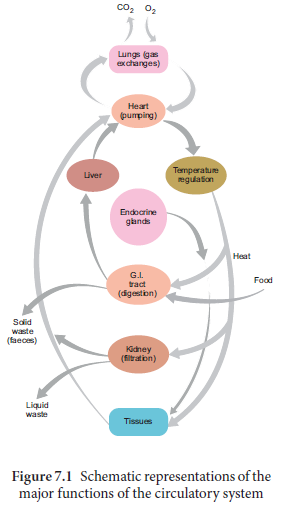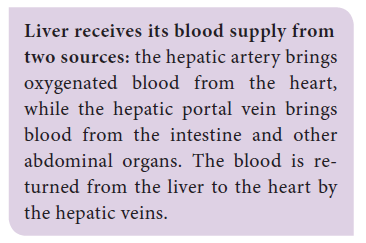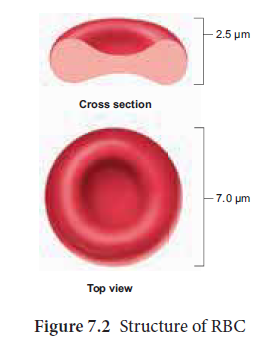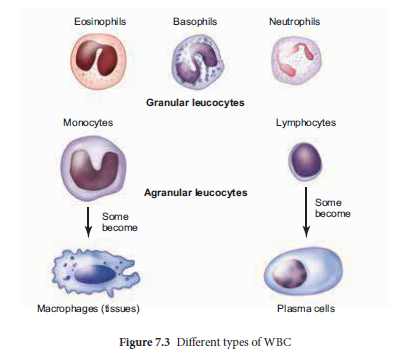Chapter Outline
7.1 Body fluids
7.2 Blood vessels – Arteries,Veins and capillaries
7.3 Circulatory path ways
7.4 Human circulatory system
7.5 Double circulation
7.6 Regulation of cardiac activity
7.7 Disorders of the circulatory system
7.8 Cardio pulmonary Resuscitation (CPR)
Learning Objectives:
• Understands the importance of body fluids.
• Identifies and describes the blood cells, differentm types of blood groups and blood coagulating factors.
• Differentiate the blood vessels and its properties
• Understands the human circulatory system.
• Understands the cardiac cycle and relate with the peaks of ECG.
• Identifies the disorders of circulatory system.
Animals particularly larger animals like mammals, are more active. Th ey depend on locomotion to fi nd food which is an energy consuming process. Nervous system is required to coordinate activities by sending nerve impulses that involves energy. All living cells have to be supplied with nutrients, oxygen and other substances and have to remove CO2 and waste products from them. It is therefore essential to have effi cient mechanisms for transport of these substances to and from the cells. Diff erent groups of animals have evolved diff erent methods of transport. Very small organisms like the sponges and coelenterates lack a circulatory system. Water from their surroundings enters their body cavity to facilitate the cells to exchange substances by diff usion. More complex organisms use special fl uids and well organized transport systems within their body to transport such materials by bulk fl ow or connective transport with pumps. The henomenon of bulk fl ow is fundamental to many physiological processes like respiration, digestion and excretion. Th e bulk fl ow of fl uids can transport substances to long distances faster than by diff usion. The human circulatory system can circulate a millilitre of blood from the heart to feet and back again within 60 sec, rather than 60 years which may be needed if it were by diffusion.
Within our body the transport system helps in the coordination of physiological processes by transporting chemical signals from one place to another and assisting in the defence of the body by transporting immune cells to the sites of infection.These processes contribute to overall homeostasis (maintenance of constant internal environment). Movement of respiratory gases, hormones, nutrients, wastes and heat are carried by the circulatory system as shown in Figure 7.1.
Oxygen and carbon dioxide are exchanged in the lungs and tissues whereas nutrients from the digestive system are carried to the liver and the wastes from the tissues are carried by the blood and finally removed by the kidneys. The hormones are transported to their target organs. Circulatory system helps to maintain the homeostasis of the body fluids and body temperature (heat exchange).
The homeostatic regulation of the cardio vascular system maintains blood flow, or perfusion, to the heart and brain. In vasovagal syncope (fainting), signals from the nervous system cause a sudden decrease in blood pressure, and the individual faints from lack of oxygen to the brain.

7.1 Body fl uids
Th e body fl uid consists of water and substances dissolved in them. Th ere are two types of body fl uids, the intracellular fl uid present inside the cells and the extracellular fl uid present outside the cells.The three types of extracellular fl uids are the interstitial fl uid or tissue fl uid (surrounds the cell), the plasma (fluid component of the blood) and lymph. The blood flowing into the capillary from an arteriole has a high hydrostatic pressure. This pressure is brought about by the pumping action of the blood and it tends to force water and small molecules out through the permeable walls of the capillary into the tissue fluid.
The volume of fluid which leaves the capillary to form tissue fluid is the result of two opposing pressures. The water potential is lesser than hydrostatic pressure inside the capilary bed which is enough to push fluid into the tissues. The tissue fluid has low concentration of protien than that of plasma. At the venous end of the capillary bed, the water potential is greater than the hydrostatic pressure and the fluid from the tissues flows into the capillary and water is drawn back into the blood, taking with it waste products produced by the cells.
Composition of Blood
Blood is the most common body fluid that transports substances from one part of the body to the other. Blood is a connective tissue consisting of plasma (fluid matrix) and formed elements. The plasma constitutes 55% of the total blood volume. The remaining 45% is the formed elements that consist of blood cells. The average blood volume is about 5000ml (5L) in an adult weighing 70 Kg.
7.1.1 Plasma
Plasma mainly consists of water (80- 92%) in which the plasma proteins, inorganic constituents (0.9%), organic constituents (0.1%) and respiratory gases are dissolved. The four main types

of plasma proteins synthesized in the liver are albumin, globulin, prothrombin and fibrinogen. Albumin maintains the osmotic pressure of the blood. Globulin facilitates the transport of ions, hormones, lipids and assists in immune function. Both Prothrombin and Fibrinogen are involved in blood clotting. Organic constituents include urea, amino acids, glucose, fats and vitamins; and the inorganic constituents include chlorides,carbonates and phosphates of potassium, sodium, calcium and magnesium. The composition of plasma is not always constant. Immediately after a meal, the blood in the hepatic portal vein has a very high concentration of glucose as it is transporting glucose from the intestine to the liver where it is stored. The concentration of the glucose in the blood gradually falls after sometime as most of the glucose is absorbed. If too much of protein is consumed, the body cannot store the excess amino acids formed from the digestion of proteins. The liver breaks down the excess amino acids and produces urea. Blood in the hepatic vein has a high concentration of urea than the blood in other vessels namely, hepatic portal vein and hepatic artery.
7.1.2 Formed elements
Red blood cells/corpuscles (erythrocytes),white blood cells/corpuscles (Leucocytes) and platelets are collectively called formed elements.
Red blood cells
Red blood cells are abundant than the other blood cells. There are about 5 million to 5.5 millions of RBC mm23 of blood in a healthy man and 4.5-5.0 millions of RBC mm-3 in healthy women.The RBCs are very small with the diameter of about 7μm (micrometer). The structure of RBC is shown in Figure 7.2. The red colour of the RBC is due to the presence of a respiratory pigment, haemoglobin dissolved in the cytoplasm. Haemoglobin plays an important role in the transport of respiratory gases and facilitates the exchange of gases with the fluid outside the cell (tissue fluid). The biconcave shaped RBCs increases the surface area to volume ratio, hence oxygen diffuses quickly in and out of the cell. The RBCs are devoid of nucleus, mitochondria, ribosomes and endoplasmic reticulum. The absence of these organelles accommodates more haemoglobin thereby maximising the oxygen carrying capacity of the cell. The average life span of RBCs in a healthy individual is about 120 days after which they are destroyed in the spleen (graveyard / cemetery of RBCs) and the iron component returns to the bone marrow for reuse. Erythropoietin is a hormone secreted by the kidneys in response to low oxygen and helps in differentiation of stem cells of the bone marrow to erythrocytes (erythropoiesis) in adults. The ratio of red

blood cells to blood plasma is expressed as Haematocrit (packed cell volume).
White blood cells (leucocytes) are colourless, amoeboid, nucleated cells devoid of haemoglobin and other pigments.Approximately 6000 to 8000 per cubic mm of WBCs are seen in the blood of an average healthy individual. The different types of WBCs are shown in Figure 7.3.Depending on the presence or absence of granules, WBCs are divided into two types, granulocytes and agranulocytes. Granulocytes are characterised by the presence of granules in the cytoplasm and
are differentiated in the bone marrow.The granulocytes include neutrophils, eosinophils and basophils.
Neutrophils are also called heterophils or polymorphonuclear (cells with 3-4 lobes of nucleus connected with delicate threads) cells which constitute about 60%- 65% of the total WBCs. They are phagocytic in nature and appear in large numbers in and around the infected tissues.
Eosinophils have distinctly bilobed nucleus and the lobes are joined by thin

strands. They are non-phagocytic and constitute about 2-3% of the total WBCs.Eosinophils increase during certain types of parasitic infections and allergic reactions.

